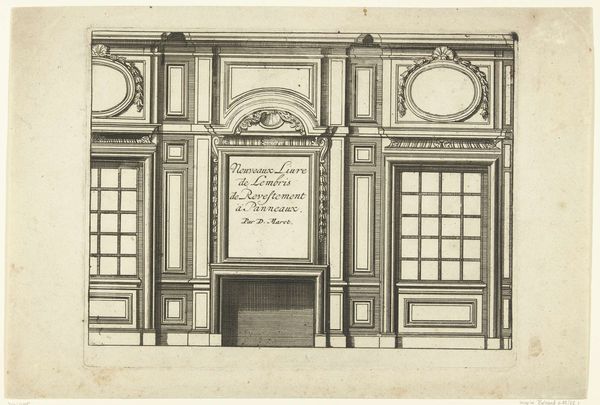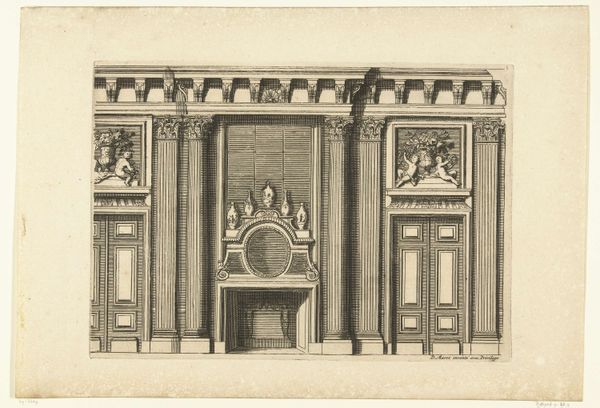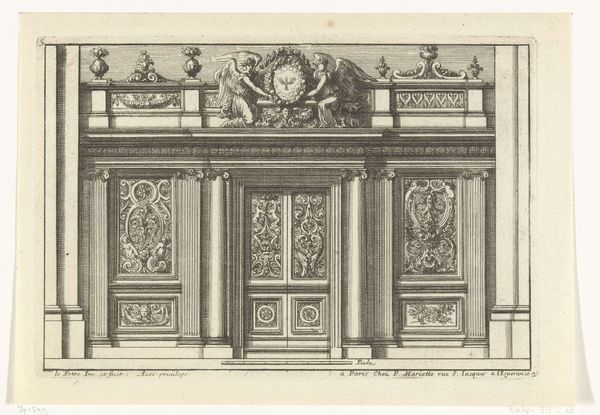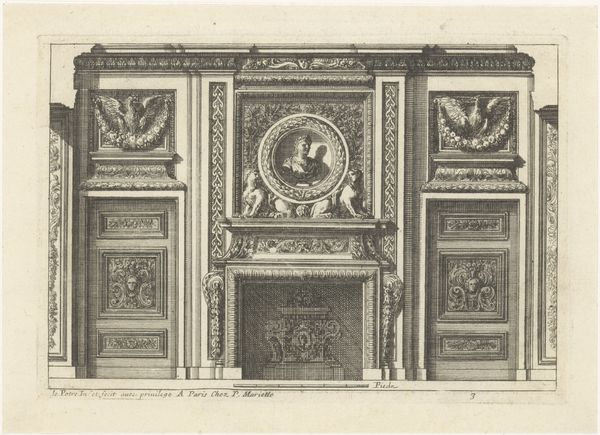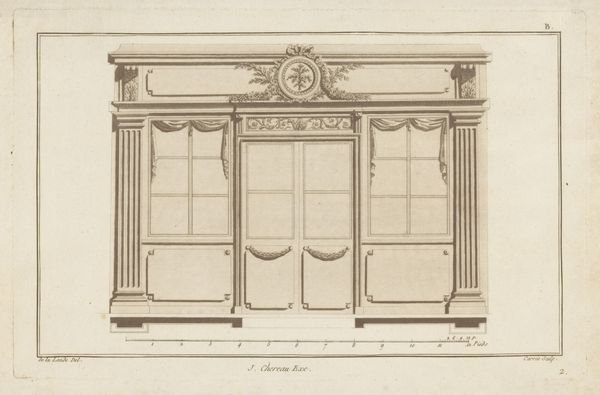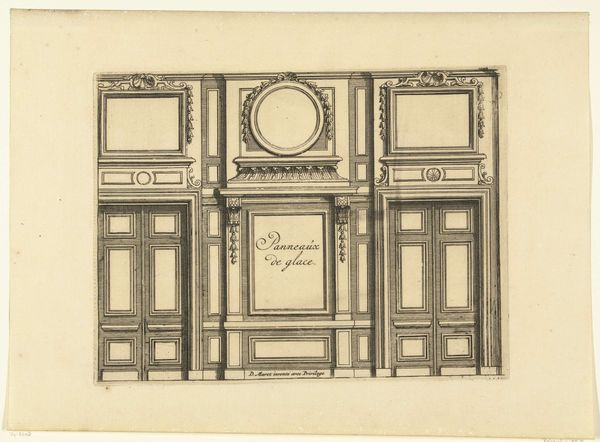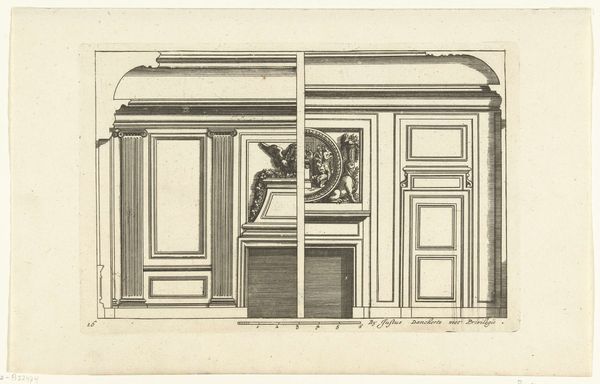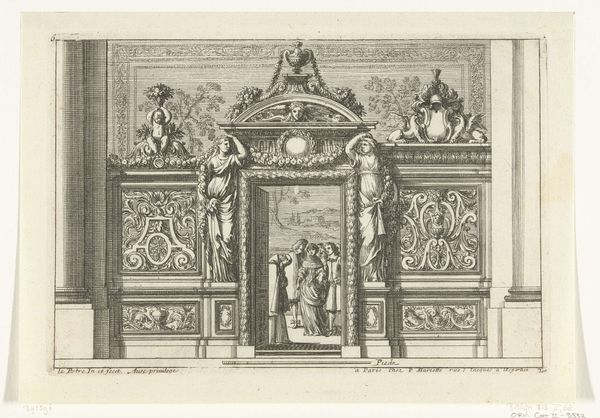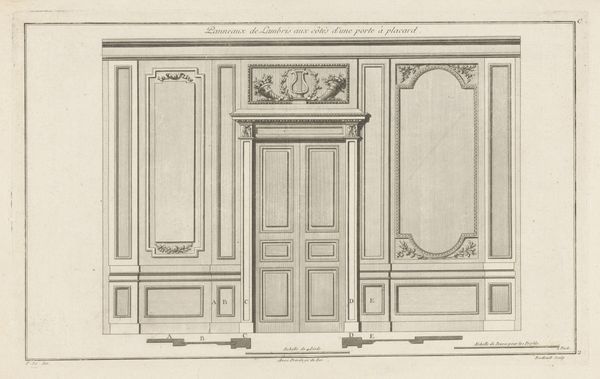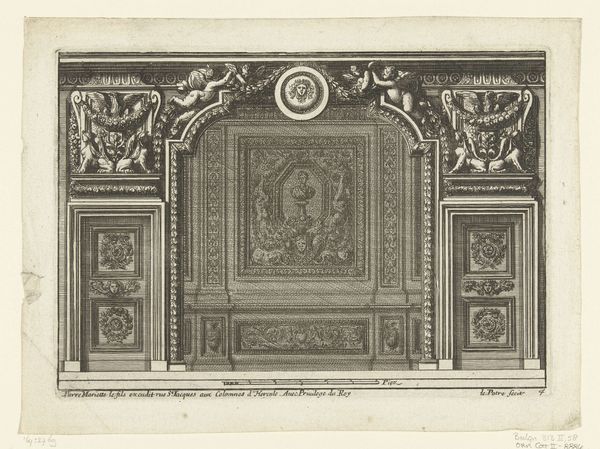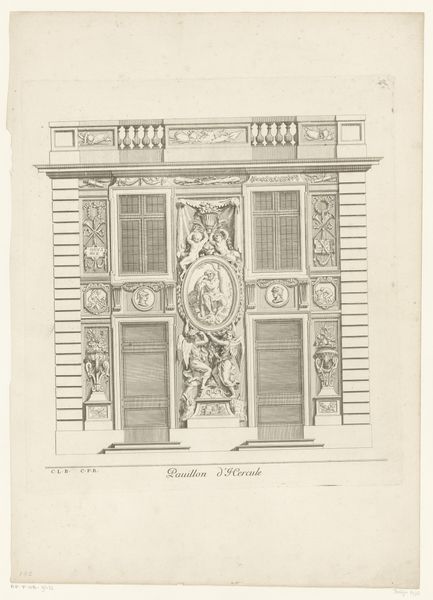
print, engraving, architecture
#
baroque
#
ink paper printed
# print
#
old engraving style
#
line
#
engraving
#
architecture
Dimensions: height 168 mm, width 219 mm
Copyright: Rijks Museum: Open Domain
Curator: This engraving, “Muur met schoorsteen tussen twee deuren,” which translates to “Wall with chimney between two doors,” by Daniël Marot, dating from around 1703 to 1712. It offers a fascinating glimpse into interior architectural design during the Baroque period. Editor: It has an incredibly austere and balanced composition. My eye is immediately drawn to the materiality of the elements; the precision of line engraving captures the intended textures of wood, stone, and the reflective “Panneaux de glace,” the panels of glass or perhaps mirrors. Curator: The design's emphasis on symmetry speaks volumes about the social values of the era. This design represents control, order, and hierarchy, very much reflective of Louis XIV's court, where appearances held significant political power. One cannot overlook the portraits featured above each doorway either—perhaps figures designed to subtly imply a patriarchal household, nobility, or other power figures from the past. Editor: It makes you wonder what these walls were truly built of: How much regional difference did the materials represent? Was the wood primarily oak or another lumber easily accessible? To whom were these spaces available; could it be a depiction of what materials that person had acquired, stolen, or generated from the land, representing one’s position in life? Curator: Yes, certainly understanding Marot's intention with this drawing demands acknowledging his patron base—ruling families and other wealthy elites seeking to emulate Versailles’ opulent lifestyle. So considering the impact of colonialism and slavery in providing many of the necessary rare commodities would prove indispensable to interpreting it today, for me. Editor: Exactly, to extend that concept; one might ponder whether this kind of work reinforced an ever-present and tangible gap. The doors, after all, speak volumes on the way in which it might divide both people as well as purposes throughout society; by doing that, the people are then forevermore reminded of social boundaries both within domestic or societal arenas, regardless of whatever era in history. Curator: By considering all factors – from Marot's biography to questions on labor conditions prevalent during that time to analyzing what these rooms communicate historically with our modern sensibilities, – we gain a significantly enriched understanding. Editor: Agreed. This blueprint presents so many critical considerations for interpreting that period. Analyzing elements with those kinds of multiple perspectives in view certainly invites questions which allow a far richer engagement.
Comments
No comments
Be the first to comment and join the conversation on the ultimate creative platform.
